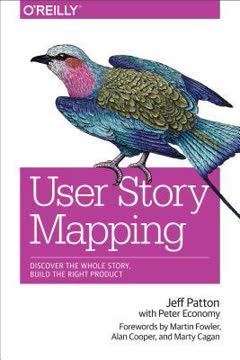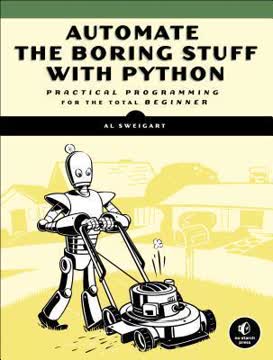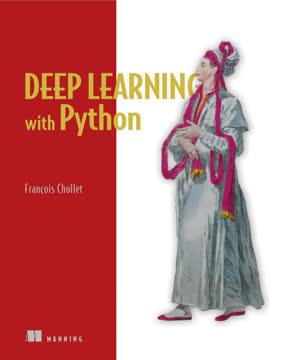つの重要なポイント
1. Python: 多用途で初心者に優しいプログラミング言語
Pythonは、1980年代後半にGuido van Rossumによって作成された広く使用されている高水準プログラミング言語である。この言語はコードの可読性とシンプルさを強調しており、プログラマーが迅速にアプリケーションを開発できるようにしている。
シンプルさと可読性。 Pythonの設計哲学は、クリーンで読みやすいコードを優先しており、初心者と経験豊富なプログラマーの両方にとって理想的な選択肢となっている。その構文は英語に似ており、学習曲線を緩和し、開発者が複雑な言語ルールではなく問題解決に集中できるようにしている。
多用途性と応用。 Pythonの広範なライブラリエコシステムは、さまざまな分野での使用を可能にしている:
- ウェブ開発
- データ分析と機械学習
- 科学計算
- 自動化とスクリプティング
- ゲーム開発
- デスクトップアプリケーション
クロスプラットフォーム互換性。 Pythonコードは、異なるオペレーティングシステム上で修正なしに実行でき、その移植性と多様なコンピューティング環境での有用性を高めている。
2. Python環境の設定と最初のプログラムの作成
まず、IDLEプログラムを起動しましょう。他のプログラムと同様にIDLEプログラムを起動します。
Pythonのインストール。 公式ウェブサイト(python.org)からPythonインタープリタをダウンロードしてインストールします。お使いのオペレーティングシステムに適したバージョンを選び、インストール手順に従います。
IDLEの使用。 IDLE(統合開発および学習環境)はPythonの組み込みIDEです:
- コンピュータのアプリケーションからIDLEを起動
- インタラクティブなコーディングと迅速な実験のためにPythonシェルを使用
- File > New Fileを使用して新しいPythonスクリプトを作成
最初のプログラムの作成。 シンプルな「Hello World」プログラムを作成して始めましょう:
- IDLEで新しいファイルを開く
- 次のように入力:print("Hello World")
- ファイルを.py拡張子で保存
- F5またはRun > Run Moduleを使用してプログラムを実行
この基本的なプログラムは、関数(print())や文字列データ型などの基本概念を紹介し、より複雑なPythonプログラミングの基礎を築きます。
3. Pythonにおける変数、データ型、および基本操作の理解
変数は、プログラム内でデータを保存および操作するために使用される名前です。
変数と代入。 Pythonの変数はデータを保存するためのコンテナとして機能します:
- 変数を次の形式で宣言:variable_name = value
- Pythonは動的型付けを使用し、自動的にデータ型を決定
- 変数名は説明的であり、命名規則に従うべき
基本データ型:
- 整数:整数(例:42)
- 浮動小数点数:小数(例:3.14)
- 文字列:テキストデータ(例:"Hello")
- ブール値:TrueまたはFalseの値
- リスト:アイテムの順序付きコレクション
- 辞書:キーと値のペア
操作と式。 Pythonはさまざまな操作をサポート:
- 算術:+, -, *, /, //, %, **
- 比較:==, !=, <, >, <=, >=
- 論理:and, or, not
これらの基本を理解することで、Pythonプログラム内でデータを効果的に操作することができます。
4. ユーザー入力と出力でPythonプログラムをインタラクティブにする
input()関数はPython 2とPython 3で若干異なります。Python 2では、ユーザー入力を文字列として受け取るにはraw_input()関数を使用する必要があります。
ユーザー入力。 input()関数はプログラムがユーザーからデータを受け取ることを可能にします:
- 構文:variable = input("プロンプトメッセージ")
- 常に文字列を返す;他のデータ型には型変換を使用
出力の表示。 print()関数はユーザーに情報を表示するために使用されます:
- カンマで区切られた複数の引数を受け取ることができる
- より複雑な出力のための文字列フォーマットをサポート
文字列フォーマットの技法:
- %演算子:print("Hello, %s!" % name)
- format()メソッド:print("Hello, {}!".format(name))
- f-strings(Python 3.6+):print(f"Hello, {name}!")
これらのツールを使用することで、ユーザー入力に応答し、意味のある出力を提供するインタラクティブなプログラムを作成でき、ユーザーエクスペリエンスとプログラムの機能性を向上させます。
5. 制御フロー:Pythonでの意思決定とアクションの繰り返し
すべての制御フローツールは条件文の評価を含みます。条件が満たされるかどうかに応じてプログラムは異なる進行をします。
条件文。 if-elif-else構造はプログラムが意思決定を行うことを可能にします:
if 条件:
# 条件がTrueの場合に実行されるコード
elif 別の条件:
# 別の条件がTrueの場合に実行されるコード
else:
# どの条件もTrueでない場合に実行されるコード
ループ。 繰り返し作業はforおよびwhileループで処理されます:
- Forループ:シーケンス(例:リスト、文字列)を反復
for item in sequence:
# 各アイテムに対して実行されるコード - Whileループ:条件がTrueの間繰り返す
while condition:
# 条件がTrueの間実行されるコード
制御フローツール:
- break:ループを早期に終了
- continue:ループの次の反復にスキップ
- try-except:エラーと例外を優雅に処理
これらの制御フローメカニズムは、異なるシナリオに適応し、さまざまな入力を効果的に処理する動的で応答性のあるプログラムの作成を可能にします。
6. 関数とモジュール:効率的なPythonプログラミングのための構成要素
関数は特定のタスクを実行するための事前に書かれたコードです。
関数の定義。 関数は再利用可能なコードをカプセル化します:
構文:def function_name(parameters):
# 関数本体
return result
- 説明的な名前を使用し、DRY(Don't Repeat Yourself)原則に従う
関数の構成要素:
- パラメータ:関数が操作する入力値
- return文:関数の出力を指定
- ドックストリング:関数の目的と使用法を説明するドキュメント
モジュール。 関連する関数と変数を別々のファイルに整理:
- モジュールをインポート:import module_name
- ドット表記でモジュールの内容にアクセス:module_name.function_name()
- Pythonスクリプトを保存してカスタムモジュールを作成し、インポート
関数とモジュールはコードの整理、再利用性、および保守性を促進し、小さく管理可能な部分を組み合わせて複雑なプログラムを開発することを可能にします。
7. ファイル操作:Pythonでのデータの読み取り、書き込み、および操作
ファイルから読み取る前に、ファイルを開く必要があります(ちょうどこの電子書籍をKindleデバイスやアプリで読むために開く必要があるのと同じように)。
ファイル操作。 Pythonはファイル操作のための組み込み関数を提供します:
- open():ファイルを開き、ファイルオブジェクトを返す
- read():ファイルの内容全体を読み取る
- write():データをファイルに書き込む
- close():ファイルを閉じ、システムリソースを解放
ファイルモード:
- 'r':読み取り(デフォルトモード)
- 'w':書き込み(既存の内容を上書き)
- 'a':追加(既存の内容に追加)
- 'b':バイナリモード(非テキストファイル用)
ベストプラクティス:
- 'with'文を使用してファイルを自動的に閉じる:
with open('filename.txt', 'r') as file:
content = file.read() - ファイル操作時に例外を処理してクラッシュを防ぐ
ファイル操作は、データの永続化、大規模データセットの処理、およびファイルシステムとの対話を可能にし、Pythonプログラムの機能と応用範囲を拡大します。
8. 実践プロジェクト:Pythonの概念を適用するための数学ゲームの作成
プログラム内で、整数を文字列に変換するなど、あるデータ型から別のデータ型に変換する必要がある場合があります。これを型変換と呼びます。
プロジェクト概要。 算術演算と演算の順序(BODMAS)の理解をテストする数学ゲームを作成:
- ランダムな算術問題を生成
- ユーザーの回答を評価し、フィードバックを提供
- スコアを追跡し、ファイルに保存
主要コンポーネント:
- ランダム数の生成
- 質問を作成するための文字列操作
- ユーザー入力と出力の処理
- スコア追跡のためのファイル操作
- ゲームロジックのための制御フロー
学習成果:
- 実際のシナリオでのさまざまなPython概念の適用
- 問題解決とアルゴリズムの開発
- コードの整理とモジュール化
このプロジェクトは、学んだPythonの概念を実践的にまとめ、異なる要素を組み合わせて機能的でインタラクティブなプログラムを作成する方法を示します。複雑な問題を小さく管理可能なタスクに分解し、Pythonの機能を効果的に活用する重要性を強調します。
最終更新日:
FAQ
What's "Learn Python in One Day and Learn It Well" about?
- Beginner-friendly guide: The book is designed to help absolute beginners learn Python programming quickly and effectively.
- Hands-on approach: It includes a hands-on project to reinforce learning by applying concepts in a practical way.
- Comprehensive coverage: The book covers essential Python topics, from basic syntax to more advanced concepts like functions and modules.
- Convenient reference: Appendices provide a quick reference for commonly used Python functions and data types.
Why should I read "Learn Python in One Day and Learn It Well"?
- Fast learning curve: The book is structured to help you grasp Python programming concepts rapidly.
- Clear explanations: Complex topics are broken down into easy-to-understand sections, making it accessible for beginners.
- Practical application: The hands-on project allows you to apply what you've learned, solidifying your understanding.
- Cross-platform language: Python's versatility is highlighted, showing its applicability across different operating systems and tasks.
What are the key takeaways of "Learn Python in One Day and Learn It Well"?
- Python's simplicity: Python is an ideal language for beginners due to its straightforward syntax and readability.
- Versatility of Python: The language can be used for various applications, including web development, data analysis, and automation.
- Importance of practice: The book emphasizes learning by doing, encouraging readers to engage with the hands-on project.
- Foundation for further learning: It provides a solid base for exploring more advanced Python topics and other programming languages.
How does "Learn Python in One Day and Learn It Well" explain Python's basic syntax?
- Variables and operators: The book introduces variables, naming conventions, and basic operators for arithmetic operations.
- Data types: It covers fundamental data types like integers, floats, and strings, along with type casting.
- Control flow tools: Readers learn about condition statements, loops, and how to control the flow of a program.
- Interactive programming: The book explains how to make programs interactive using input and print functions.
What are the best quotes from "Learn Python in One Day and Learn It Well" and what do they mean?
- "The best way of learning about anything is by doing." This quote emphasizes the importance of practical application in mastering programming skills.
- "Python 3.x is the present and future of the language." It highlights the significance of learning Python 3, as it is the current standard.
- "Python code resembles the English language." This underscores Python's readability, making it easier for beginners to learn.
- "If you learn one language well, you can easily learn a new language in a fraction of the time." This suggests that mastering Python can facilitate learning other programming languages.
How does "Learn Python in One Day and Learn It Well" cover data types in Python?
- Basic data types: The book explains integers, floats, and strings, including how to declare and manipulate them.
- Advanced data types: It introduces lists, tuples, and dictionaries, detailing their uses and how to work with them.
- Type casting: Readers learn how to convert between different data types using built-in functions like int(), float(), and str().
- Practical examples: The book provides examples and exercises to help readers understand and apply these data types.
What is the hands-on project in "Learn Python in One Day and Learn It Well"?
- Math and BODMAS project: The project involves creating a program that tests the user's understanding of arithmetic operations following the BODMAS rule.
- Step-by-step guidance: The book breaks down the project into smaller exercises, guiding readers through each step.
- Application of concepts: It requires the use of variables, loops, functions, and file handling, reinforcing the concepts covered in the book.
- Challenge exercises: Additional exercises are provided to further test and expand the reader's programming skills.
How does "Learn Python in One Day and Learn It Well" explain functions and modules?
- Function definition: The book teaches how to define and use functions, including the use of parameters and return statements.
- Variable scope: It explains the difference between local and global variables and how they affect function behavior.
- Importing modules: Readers learn how to import and use built-in Python modules, as well as create their own.
- Practical examples: The book provides examples to illustrate how functions and modules can simplify and organize code.
What are the control flow tools discussed in "Learn Python in One Day and Learn It Well"?
- If statements: The book covers how to use if, elif, and else statements to make decisions in a program.
- Loops: It explains for and while loops, including how to iterate over sequences and control loop execution.
- Break and continue: Readers learn how to exit loops prematurely or skip iterations using these keywords.
- Error handling: The try and except statements are introduced to manage errors and exceptions in a program.
How does "Learn Python in One Day and Learn It Well" address file handling in Python?
- Opening and reading files: The book explains how to open, read, and close text files using Python.
- Writing to files: It covers how to write and append data to files, including handling binary files.
- File operations: Readers learn how to delete and rename files using functions from the os module.
- Practical application: Examples and exercises demonstrate how to use file handling in real-world scenarios.
What is the significance of the appendices in "Learn Python in One Day and Learn It Well"?
- Quick reference: The appendices provide a convenient reference for string, list, tuple, and dictionary operations.
- Built-in functions: They list and explain various built-in functions and methods available in Python.
- Sample codes: Examples are provided to illustrate how to use these functions in practical situations.
- Supplementary material: The appendices complement the main content, offering additional resources for learning and practice.
What are the challenges and exercises in "Learn Python in One Day and Learn It Well"?
- Hands-on exercises: Each chapter includes exercises to reinforce the concepts covered and encourage active learning.
- Project challenges: The book presents additional challenges related to the hands-on project to test and expand the reader's skills.
- Problem-solving focus: The exercises emphasize problem-solving, helping readers develop critical thinking and coding skills.
- Encouragement to explore: Readers are encouraged to experiment with the code and explore beyond the exercises to deepen their understanding.
レビュー
本書『Learn Python in One Day and Learn it Well』は賛否両論の評価を受けている。多くの初心者にとっては、その明確な説明と簡潔なアプローチが役立つと称賛されている。一部の経験豊富なプログラマーも、クイックリファレンスとして評価している。しかし、批評家たちは、本書が内容を簡略化しすぎており、オブジェクト指向プログラミングの深みが欠けていると指摘している。また、「一日で習得できる」という約束を果たしていないとも言われている。付属のプロジェクトについても賛否が分かれている。総じて、本書はPythonの基本を学ぶための良い出発点と見なされているが、上級学習や深い知識を求める経験豊富なプログラマーには十分ではないとされている。
Similar Books















